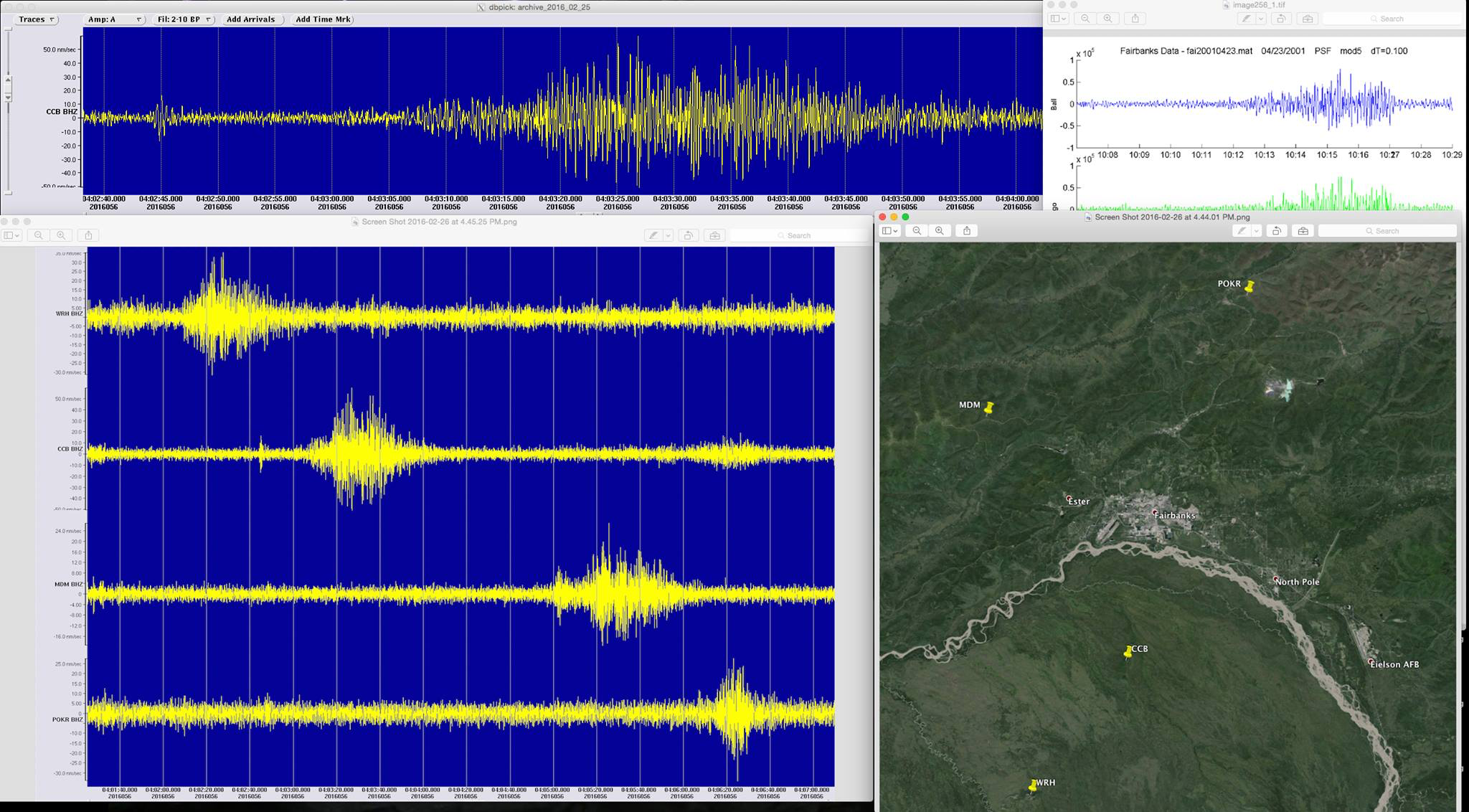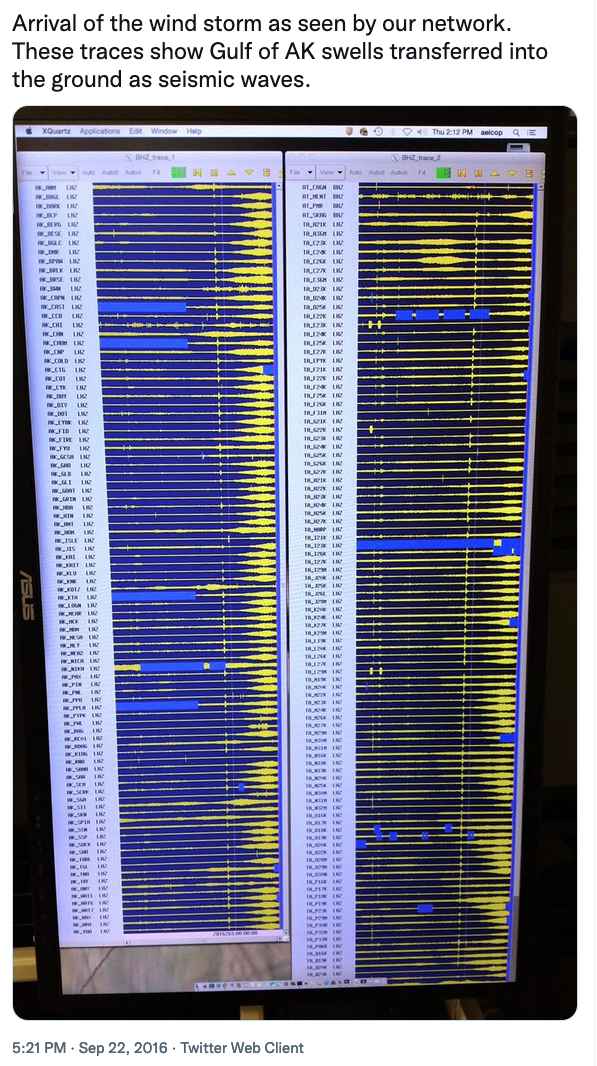Other Seismic Sources
Here are a few more examples of interesting types of seismic sources.
Bolides (meteors)
A bolide is a meteor that enters Earth’s atmosphere, often exploding. Several of these space rock explosions have been detected by Earthquake Center seismometers.
September 30, 2021: The fiery demise of a bolide flashed over the Kenai Peninsula, with a loud, rolling boom heard by several observers in the southern Peninsula. Witnesses as far north as Anchorage reported seeing the bright flash. The seismic and infrasound (sound waves below what humans can hear) sensors on the Homer seismic station recorded the event.
October 15, 2020: Observers in northwestern and central Alaska, from McGrath to Wainwright, reported a bright flash of light around 7:30 a.m. One report said the streak of light broke into four dots. Researchers at the Wilson Alaska Technical Center used infrasound records to estimate the bolide possibly landed north of the Innoko River in central Alaska.
Feb 24, 2016: People around Fairbanks reported a fireball overhead around 7:00 p.m. Earthquake Center staff later found what appeared to be the sonic boom from the meteor on several seismic stations. The figure below shows seismograms from Earthquake Center stations, with a description from the Earthquake Center Facebook post.

Human-generated seismicity
Human activity, especially concentrated in cities, can generate seismic signals. The seismic sensors at our stations are sensitive enough to detect this “cultural noise,” such as ground shaking caused by passing cars, trains, and construction activity. Being aware of these types of seismic sources located near a station can help tease out the “noise” from an earthquake’s seismic waves.
Nuclear test monitoring
A nuclear explosion can be detected by seismometers around the world. The seismogram of a nuclear explosion has a distinctive look, with a percussive initial P wave and an absent secondary or S wave. Earthquakes exhibit both P and S waves. The location of the source of the explosion can also be a clue that it wasn’t generated by a tectonic earthquake.

Learn more about nuclear test monitoring:
Wilson Alaska Technical Center
The North Korean nuclear test: A rare glimpse of the deep Earth?
Thoughts on the North Korea nuclear test
Ocean waves, sea ice, storm activity
Some of the “background noise” on seismometers proves to be a treasure trove of information for topics beyond earthquakes. The energy of ocean waves hitting shore registers as “microseismic” activity on a seismogram. When sea ice forms close to shore, the seismic noise from the ocean waves drops off, providing a tool for scientists studying sea ice presence in Alaska’s waters.
Storms with high-speed winds can also cause ocean waves to generate seismic noise. The Earthquake Center social media post here shows a wind storm in the Gulf of Alaska where ocean swells hitting shore registered as seismic waves on a seismogram.
Wildlife
Wildlife is abundant–and curious–in Alaska. Bears often damage seismic stations, but other animals may visit, and some are large enough to leave their signature on a seismogram. Our seismic station on Baldy Mountain (BAL), about 20 miles from McCarthy across the Chitina River, has a history of being damaged by bears.

Earthquake moose (April 2016)






